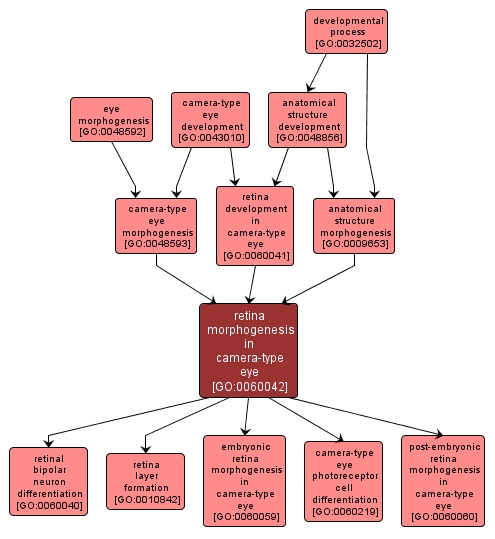GO TERM SUMMARY
|
| Name: |
retina morphogenesis in camera-type eye |
| Acc: |
GO:0060042 |
| Aspect: |
Biological Process |
| Desc: |
The process by which the anatomical structure of the retina is generated and organized. Morphogenesis pertains to the creation of form. |
Synonyms:
- retina morphogenesis in camera-style eye
- retinogenesis
|
|

|
INTERACTIVE GO GRAPH
|














